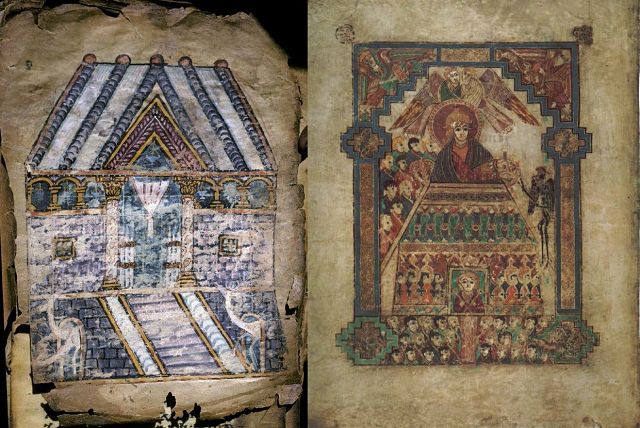Marginalia — Los Angeles Review of Books
It’s not every day that scholars discover new Bible manuscripts from the ancient world. It’s even rarer to discover ones endowed with luxurious painted images. Yet this is precisely what has happened over the past decade thanks to groundbreaking research into three ancient codices from Ethiopia, the earliest surviving copies of the Gospels in Ethiopic.
The manuscripts, which were produced and are still housed at the Monastery of Abba Garima in Ethiopia’s northern highlands, were not completely unknown to experts before, having been published for the first time in the 1960s. But recent work by Judith McKenzie and Francis Watson—published in a spectacular new book—has led to a radical reassessment of their dates and significance. Through radio-carbon testing and fresh analysis of their iconography and texts, we now know that the three Abba Garima Gospels were copied not in the tenth or eleventh centuries, as once thought, but between the fifth and seventh centuries at the zenith of Ethiopia’s ancient Christian civilization. For anyone interested in the history of the Bible, late antiquity, or Ethiopia itself, this is very big news.

The Abba Garima manuscripts. (Photo courtesy of Michael Gervers)
To put the discovery in perspective, the Abba Garima manuscripts are among the very oldest illustrated Gospels in the world. When it comes to firmly dated parallels, only the Syriac Rabbula Gospels, produced near Antioch in 586, is earlier. The Abba Garima Gospels are also older than several of the greatest monuments of Western manuscript illumination, including the Codex Amiatinus, the Lindisfarne Gospels, and the Book of Kells, all of which were copied in the British Isles between the eighth and ninth centuries. Then, as today, Ethiopia lay far, far away from Syria and Ireland. Despite this, the manuscripts show striking similarities to the art of other ancient Christian cultures outside of Africa. Indeed, they are a testament to the deep connections between Ethiopia and the wider late antique world.